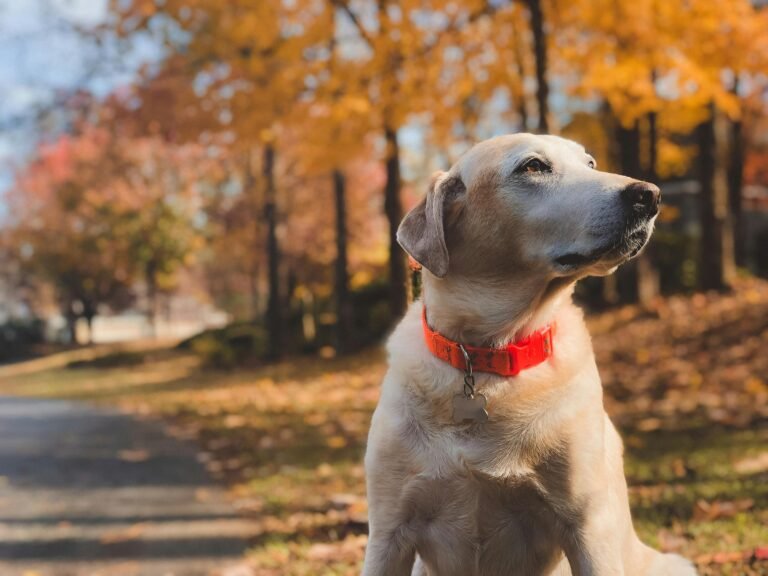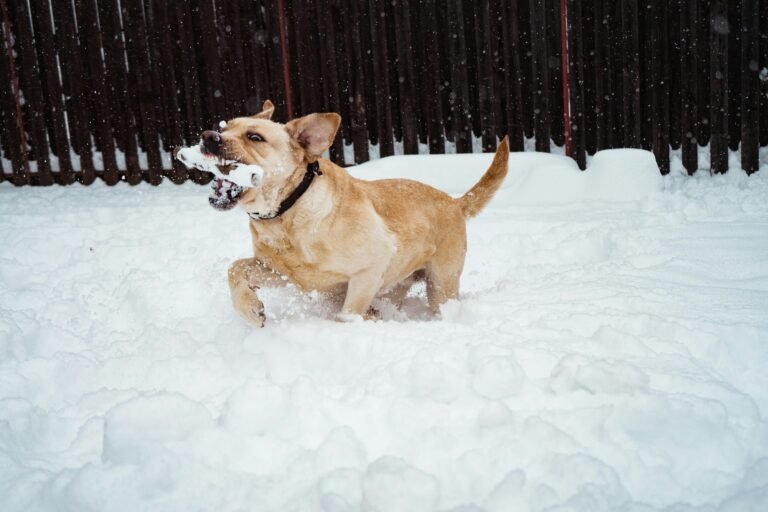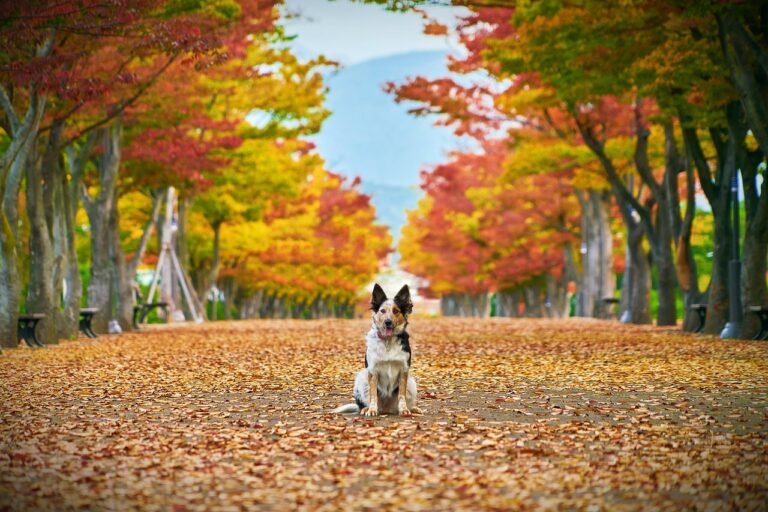Fall is a wonderful time to get outside with your four-legged companion. Crisp air and colorful foliage provide the perfect backdrop for walks, hikes and photos. However, the change of season also brings new hazards for curious canines, from hidden dangers in leaf piles to increased wildlife activity. This guide blends safety tips with ideas for seasonal fun so you and your dog can make the most of autumn. We’ll discuss common hazards like toxic acorns and mushrooms, rodenticides, antifreeze leaks, fleas and ticks, fall allergies and festive foods. We’ll also share outdoor adventures – hiking, pumpkin patch visits, dog parks – and cozy indoor activities such as DIY agility courses and movie nights. With a little preparation, fall can be the most rewarding season to bond with your dog.
Hidden Dangers in Leaf Piles and on the Ground
- Leaf piles: Dogs love to dive into leaves, but they may hide sharp sticks, broken glass and mold.
- Acorns: Contain tannins that can upset stomachs or cause kidney issues if eaten.
- Mushrooms: Many wild mushrooms are toxic — keep dogs away from them altogether.
Rodenticides, Antifreeze and Ice Melts
- Rodenticides: Contain chemicals that can cause internal bleeding in dogs.
- Antifreeze: Even small amounts of ethylene glycol are highly toxic; wipe paws and store securely.
- Ice melts: Some formulas burn paw pads and can be dangerous if licked. Use pet-safe products and wash paws after walks.
Fleas, Ticks and Other Parasites
Fleas and ticks remain active well into fall, thriving in damp leaf litter. Deer ticks, carriers of Lyme disease, are especially active. Continue flea and tick prevention year-round, inspect your dog’s coat after walks and maintain heartworm prevention until freezing temperatures set in.
Fall Allergies and Seasonal Illness
Pollen, mold and dust can trigger fall allergies in dogs, causing itching, paw licking or ear infections. Wipe your dog down after outdoor time and ask your vet about antihistamines or medicated shampoos if needed. Cooler weather can also worsen arthritis in older dogs, so ask your veterinarian about joint supplements or pain management.
Holiday Food and Decor Hazards
- Dangerous foods: Chocolate, xylitol (in sugar-free gum), raisins, grapes, alcohol, turkey bones and corn cobs.
- High-fat foods: Can cause pancreatitis.
- Decorations: Avoid open flames; use flameless candles. Hide electrical cords.
- Costumes: Choose comfortable outfits that don’t restrict movement, vision or breathing. Avoid small pieces that could be swallowed. Never leave a costumed dog unsupervised.
- Festivities: Trick-or-treating noise can stress pets. Create a quiet, safe space with toys and treats.
Preparing for Cold Weather
- Limit outdoor time for small or short-haired dogs.
- Provide a warm, draft-free bed.
- Use a sweater or coat for sensitive dogs on chilly outings.
- Moisturize paw pads with pet-safe balm to prevent cracks.
- Maintain gentle exercise routines to ease arthritis in older dogs.
Fall Fun: Outdoor Adventures
- Hiking: Choose trails that suit your dog’s fitness, bring water and waste bags.
- Pumpkin patches & markets: Many are dog-friendly; check rules and supervise your dog around food.
- Orchards & corn mazes: Seasonal events often welcome leashed dogs and provide great photo opportunities.
- Camping/glamping: Bring flea and tick prevention, warm bedding and watch for toxic algae in lakes or ponds.
Fall Fun: Indoor and Low-Impact Activities
- DIY agility: Use hula hoops, cones and tunnels to build indoor obstacle courses.
- Puzzle toys & nose work: Challenge your dog’s mind with food-dispensing toys or hide-and-seek sniffing games.
- Movie night: Relax together with cozy blankets and cuddles.
- Grooming & massage: Bond while brushing or giving gentle massages to improve coat health.
- Training sessions: Reinforce commands or teach new tricks to keep your dog sharp.
Safe Costumes and Festivities
If you want to dress your dog for Halloween or seasonal events, choose well-fitted costumes that don’t restrict breathing or movement. Introduce costumes gradually with treats, and never force a dog who is uncomfortable. For parties, create a quiet retreat with a comfy bed and favorite toys. Consider calming aids, pheromone sprays or a snug anxiety wrap for extra reassurance.
Conclusion
Autumn offers a unique blend of sensory delights and hidden hazards. By understanding the risks posed by the season — from toxic plants and chemicals to pests and allergies — you can protect your four-legged friend. With preparation, fall is also a wonderful time to explore new trails, visit festive events and enjoy cozy evenings indoors. Combine outdoor adventures with indoor enrichment to keep your dog healthy, happy and engaged. Whether you’re crunching leaves on a forest path or snuggled on the couch, these autumn adventures will deepen the bond between you and your canine companion.






